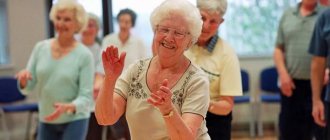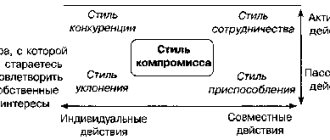From the moment we are born, we become part of a group that is our family, and from there, throughout our lives, many groups form and break up, such as a group of friends from school, in addition to groups within groups. We, who spend our free time, love theater companies.
A group is an association of two or more people who meet with a certain frequency and for a specific purpose. Achieving this goal encourages them to direct the behavior of participants and create a functioning system.
But what do these groups have in common? That is, why are both the family and the theater group called a group? The answer is complex, since a group is a diverse and changing definition in psychology, and there is no single definition of a group.
First of all, you should know that there are three main aspects involved in the study of any group phenomenon, namely:
- Determining the group from which it starts.
- The degree of reality that is given to the group.
- Corresponding block of analysis.
Group formation is a continuous process that develops over a more or less long period of time. Many groups start at a specific time and can be set to a specific date for their creation (for example, the formation of a work group or therapy group).
However, most natural groups are of diffuse origin and are difficult to identify.
The concept of a group in psychology
To make the definition of a group more understandable, let’s combine them according to the following characteristics:
- Media interdependence.
- Identity or consideration of perceptual-cognitive aspects.
- Interaction between participants and the social structure of the group.
According to Marvin Shaw, every group should have the following characteristics:
Let's look at the different definitions of groups:
- Definitions based on interdependence of members:
It should be noted that interdependence is a common characteristic of most definitions of the concept of group. This approach defends that the essential aspect for a group of people to be called a group is that there is interdependence among them. According to Levine, the group's definition would be:
“The concept of a group as a dynamic whole must include a definition of the group based on the interdependence of the members (or rather subdivisions of the group)” (Lewin, 1936)
Another defender of this movement was Deutsch, who gave the following definition of the group:
“A sociological group exists to the extent that its components pursue goals that promote interdependence.”
- Definitions based on identity or perceptual-cognitive aspects:
Another definition is postulated from the theory that groups are formed for the purpose of giving an individual a social identity. That is, the group is formed as a group. And in this sense of belonging and identity, members must be aware of it.
- Definitions based on the interaction of members and the social structure of the group:
The third important criterion is the interaction between group members. This one protects the same interaction that supports the group definition. In this sense, the opinions of different authors differ, because while some advocate that interaction is an important element of group formation, others believe that it is not a necessary requirement for group formation.
Classification of associations by composition, features, forms of relations
Groups are divided into conditional (identified by researchers based on a common characteristic) and real (existing as a community). Real groups are divided by the nature and characteristics of interaction
- Nominal - organized spontaneously, exists temporarily. Members of the community do not develop close relationships; their main interest is performing certain activities. Such communities include tourists, spectators, and public transport passengers.
- Association is a union that includes only individuals united by common goals (union of friends). As a rule, they are stable, leadership is democratic in nature.
- Cooperation is a stable community with clear goals. The level of cooperation is high, the relationship is businesslike, and the hierarchy is strictly observed. Thanks to this, high performance in the chosen type of activity is achieved.
- Corporation - unites around internal goals, ignoring external ones. Acts as an asocial association, not inclined to cooperate with other communities.
As a rule, the format of group relations is determined before the formal unification of the community. But accidentally entering a community with a strong leader with interests that contradict the original ones can change the internal foundations and direction of the community.
The role of the group in personality development
Groups influence our personal and social identities as each individual does basic learning and socialization in groups, be it with family, friends, colleagues, etc.
The primary motivation that drives people to form bonds with others coexists with the need to maintain their independence and individuality. These trends seem incompatible, but they are not. Moreover, the formation of groups is not only not incompatible with individuality, but is often a means of achieving it. However, it cannot be denied that in some cases there may be a conflict between two tendencies that affects the development of groups.
The answer to why and how people join groups is not always the same, since sometimes they follow instrumental criteria or other functionalist criteria, or are motivated by feelings of interpersonal attraction based on different characteristics.
First, people join groups because it involves satisfying a number of needs that cannot be satisfied by isolated individuals. The main needs that groups can potentially satisfy are:
- psychological needs;
- information reciprocity;
- interpersonal needs;
- collective needs.
Regarding the question of why people join a group, there are three types of circumstances that turn a group of people into a group:
- One or more people may deliberately create a group to achieve some goal.
- A group can form spontaneously because people come together to satisfy some need. This is the case of informal groups within organizations, social clubs or youth gangs.
- A group of people can become a group because other people treat them equally. In this case, the process of social categorization is at work, which consists of classifying people into groups based on some common characteristic.
Our attitudes, our social perceptions, and our behavior in general are influenced by our membership in different social groups. For this reason, “it is important to look at what is happening around the subject in order to understand what he is doing, and often what he is thinking and feeling inside”, “to look outside to understand what is inside”
For our physical and emotional survival, we need to be part of a group. Family and friends are the first groups we come into contact with. In the social space of the family we build our individual and social identity. With friends, we satisfy emotional needs such as acceptance and respect.
The influence of groups on people is such that it determines the formation of psychosocial personality, understood as a certain way of thinking, feeling and acting that makes us unique and different from others and is the result of the interactions that we maintain. with various significant figures of the various formal and informal groups to which we belong or belonged.
Conflicts within the team, means of intragroup influence
Conflict is an inevitable social phenomenon, which is necessarily included in the concept of a group in psychology. In psychology, conflict is a relationship between subjects characterized by confrontation of ideals, goals and interests. Conflict can be intrapersonal, interpersonal and intragroup. The more individuals are involved in the confrontation, the more destructive and larger-scale the impact of the situation on the development of the team.
Stages of conflict development in a team:
- Pre-conflict - the subject of the conflict is highlighted, there are no clashes between opponents yet. Dissatisfaction and emotional tension increases.
- An incident is an open clash that is the impetus for the development of a conflict.
- Escalation is the upper limit of conflict development. The parties to the conflict perceive each other as enemies, and the argument moves to the level of personal insults and claims. At this stage, the need to resolve the conflict becomes obvious to all participants.
- De-escalation is the end of a conflict, the transition from resistance to the search for a joint solution.
The means of intragroup influence used by the leader or influential members of the team can prevent the emergence of conflicts. These include:
- infection - voluntary or involuntary transfer of one’s condition to other individuals;
- persuasion - influencing opponents in order to instill in them your point of view;
- suggestion - influencing a person through the power of authority, changing opinions with the help of rituals, peculiarities of speech;
- coercion - the use of open or hidden threats, the demand to comply with the leader’s orders;
- request - a benevolent non-violent call to fulfill the wishes of the requester;
- criticism - the use of a negative assessment of an individual’s personality or actions, insult and neglect;
- ignoring is a special careless attitude that causes emotional instability.
A special means of influence is manipulation. The use of manipulative influence allows a group member, without being a formal leader, to influence interpersonal interaction, the formation of goals and methods of achieving them.
Classification
The characteristics that differentiate groups and how people perceive groups in everyday life constitute intuitive theories about them.
Intuitive typologies converge across four types of groups: proximity, task, social categories, and weak associations. Each group is assigned different characteristics based on certain criteria. People have intuitive theories of groups, and the more general concept of a group can be divided into a typology of groups that differ in their properties, type of interaction, and functions:
- Affinity groups: Long-term, small and with porous boundaries, they have a high degree of interaction and common goals and results, as well as importance and similarity between their members.
- Workgroups: medium-duration, small, with boundaries of moderate permeability, moderate-strong interaction, have common goals with common results, imparting medium-high importance and medium similarity.
- Category groups: long-term, large, low-permeability boundaries, weak interaction, have common goals with common results, resulting in medium importance and medium-low similarity.
Small
This is a small community of people who enter into communication. emotional connections between the participants , and their interaction is regulated by general norms and principles.
Kinds
Classification:
- by method of education: spontaneous, organized,
- by the presence of connections: real, conditional,
- by social status: official, unofficial,
- by level of development: low level, high level,
- by personal significance: reference, membership groups,
- by social significance: positive, asocial, antisocial.
Examples
A classic example is the family . This is not only a family consisting of parents and children, but also the entire set of relatives united by ties of consanguinity, marriage and emotional attachments.
The criterion for a person to belong to a family is his participation in interpersonal interaction with other relatives.
Group sizes
Let's consider this issue through the prism of the “Dunbar number” . This is a number that has been repeated throughout history and between different cultures, such as nomadic peoples, major units of the Roman army, and also today the number of workers in a company at the same hierarchical level.
This was discovered by correlating the cortical size of 36 primate species with the number of components of their groups, creating a regression equation that could predict that both variables corresponded to each other.
Correlating this information with information about a human being, the conclusion is that 147.8 is the average number of social relationships that we establish
.
Thus M. Shaw compiled a kind of average census of these groups, concluding that they were divided into three categories:
- small (from 30 to 50 individuals);
- medium (from 100 to 200);
- large (from 500 to 2500).
In his in-depth study of groups throughout history and in the early stages, he discovered that:
- 150 inhabitants was the average number of inhabitants of a Neolithic village.
- The number of teachers in the subspecialization of the discipline ranged from 150 to 200.
- 150 is the number of soldiers found in a unit on average from Ancient Rome to the 16th century.
More importantly, if the force was to be larger, it had to be divided into "manageable" groups, which always numbered around 150 people.
Hence, anthropologists around the world began to study the “Dunbar number” as a “hot topic.” "Dunbar's Number" began to be used in marketing theories and applications and even to study groups of people in virtual worlds.
The process of forming a group
A group of people who are in a movie theater or in line at a bank do not constitute a group, even if they have the same goal. This requires the presence of several factors:
Groups have longer or shorter durations depending on the proposed objectives. A neighborhood partnership formed to lay asphalt in a neighborhood may cease to exist when that goal is achieved. Or, for example, creating groups on social networks or creating a cultural center in your city or region, etc.
There are many more reasons for meetings. And they have a longer or shorter duration, depending on the results in achieving goals. That is productivity. This depends on several factors: how the group is formed and how people are integrated with each other, and the leadership.
In a group, as in all human events, although more complex than in an individual, there is a process of formation and growth. And this process can happen naturally and spontaneously, or it can be interfered with so that the group achieves greater productivity.
The predominance of public interest over personal development of the team
A good team is made up of people who passionately share common goals, believe that their contributions are valuable, and are motivated to do their best.
A team is strong when its members work well together, so building teams (read: effective teams) is essential to management in any organization. Many projects are successful only when employees interact with each other not only on work issues.
Building effective teams ensures the best results for the company and happy, motivated and dedicated employees for the success of the organization.
In order for a group to become a collective, it must go through certain stages of development:
Preparation is one of the most important aspects of team development. Defining goals clearly and early makes it easier for members to work as a unit. The team must have clearly defined roles and a clear understanding of the tasks that need to be completed to achieve the goals.
The team leader can achieve this goal through new projects or by planning team building activities. He can also strengthen this alliance by praising an individual or team product or process and recognizing achievements.
With well-organized teams, managers can put a company on the path to success.
Conflicts within the team
To understand the problem of disputes within a team and their proper management, it is necessary to keep in mind that they tend to be natural to a certain extent, since each person himself is full of conflicts.
In addition, it should be noted that the work environment is loaded with different behaviors, ways of thinking and working, which leads to the constant emergence of problems.
In this sense, and since this is a very complex issue, every team leader must have at his disposal useful tools to properly manage these conflicts, ranging from knowing the root of the problem, to understanding the attitude of each of the people.
It must be added that not all conflicts have a negative impact on the productivity of the group (company), but they need to be resolved as soon as possible to maintain a good environment, which will depend on the leader's ability to deal with conflict.
In terms of their impact, conflicts are subject to classification, which in any conditions must be resolved quickly and for the common benefit:
Group conflict management will also depend on honesty between those affected. Whatever you feel must be expressed and therefore there is no accumulation of attitudes or feelings.
Another important aspect is the separation of personal and work in conflict, taking into account that most interpersonal problems are influenced by internal or domestic conflicts, and that they are not separated upon entering the work area.
Each person spends most of his life interacting with others in a group context, from birth, through all stages of psychosocial development, and until his death he is part of various formal and informal groups.
Natalia Shakhova
Lecture on social psychology “Group as a socio-psychological phenomenon”
Educational psychologist
MBOU Novonazimovskaya secondary school No. 4
Conradi I.Yu.
Lecture on social psychology
Topic: “Group as a socio-psychological phenomenon”
Main goal
lecture session is: familiarization with the group as a socio-psychological phenomenon.
Tasks:
1. reveal the concept of group, as well as the types of social groups;
2. study the main functions and types of social groups;
3. consider the stages of formation and development of the group.
The date of the:
Literature:
1. Andreeva G.M. Social psychology M., 2003.
2. Bityanova M.R. Social psychology M., 2002.
3. Fundamentals of socio-psychological theory / Ed. A.A. Bodaleva, A.N. Sukhova M., 1995.
4. Parygin B.D. Social psychology M., 1999.
5. Rean A.A., Kolomensky Ya.L. Social educational psychology St. Petersburg, 1998.
Work plan:
1. The concept of “group”, types of social groups.
2. Basic functions and types of social groups.
3. Stages of group formation and development.
1. The concept of “group”, types of social groups
One of the general forms of social interaction is a social group in which the behavior and social status of each member is to a tangible extent determined by the activities and existence of other members.
A group is a collection of people who interact with each other in a certain way, are aware of their belonging to this group and are perceived by its members from the point of view of other people.
Assertiveness is the ability to formulate your demands and desires and achieve their satisfaction, the ability to “hear” what others want to hear from you, self-respect.
Assertive behavior is characterized by adequate self-esteem, the ability to compromise, precision and clarity of formulation, and the ability to change one’s point of view under the influence of arguments. An assertive person has a positive attitude towards other people, does not hesitate to ask for help and does not refuse to help others. If he fails at something, he does not blame others for his failure and does not attribute general success to himself.
Primary groups consist of a small number of people between whom there are stable emotional relationships, personal relationships based on their individual characteristics. Secondary groups are formed from people between whom there are almost no emotional relationships, their interaction is determined by the desire to achieve certain goals, their social roles, business relationships and methods of communication are clearly defined.
Reasons for forming groups:
- Biological survival.
- Socialization and formation of the human psyche.
- A way of doing a specific job that cannot be done by one person.
- A means of satisfying a person’s need for communication, for an affectionate and friendly attitude towards oneself, for receiving social approval, respect, recognition, trust.
- A means of reducing unpleasant feelings of fear and anxiety.
- The source of norms of behavior, social attitudes and value orientations.
- A source of standard by which a person can evaluate himself and other people.
- A means of information, material and other exchange.
2. Main functions and types of social groups
Group functions:
- Socialization function.
- Instrumental.
- Expressive.
- Supportive
- Regulatory
- Comparative.
Conditional groups are united according to a certain criterion (gender, age, profession). Real individuals included in such a group do not have direct interpersonal relationships, may not know anything about each other, and may never even meet each other.
Real groups are characterized by the fact that their members are connected to each other by objective relationships. These groups differ in size, external and internal organization, purpose and social significance.
A contact group brings together people who have common goals and interests in one or another area of life and activity.
Levels of development of contact groups:
- Unorganized (nominal, conglomerates).
- Randomly organized (movie viewers, random members of excursion groups) are characterized by a voluntary temporary association of people based on similarity or commonality of space.
A small group is a fairly stable association of people connected by mutual contacts. It is small in number (from 3 to 15 people), who are united by common social activities, are in direct communication, contribute to the emergence of emotional relationships, the development of group norms and the development of group interests.
Distinctive features of a small group:
- Spatial and temporal co-presence of people.
- The co-presence of people provides the opportunity for contacts that include interactive, informational, perceptual aspects of communication and interaction. Perceptual aspects allow a person to perceive the individuality of all other people in the group, and only then can one speak of a small group.
- Interaction is the activity of everyone, it is both a stimulus and a reaction to everyone else.
- Joint activity implies the presence of a constant goal. Types of goals: 1) short-term prospects, goals that are quickly realized over time and express the needs of this group; 2) secondary ones that last longer in time, which lead the group to the interests of the secondary collective; 3) long-term perspectives unite the primary group with the problems of the functioning of the social whole.
- Organizing the beginning.
- Separation and differentiation of roles.
- Having an emotional relationship.
- Development of a specific group culture
Psychological characteristics of the group: group interests, group needs, etc.
Group patterns:
- The group will inevitably become structured.
- The group develops (progress or regression).
- Fluctuation – a change in a person’s place in a group can occur repeatedly.
Reference groups may be real or imagined, positive or negative, may or may not coincide with membership, but they do:
- The function of social comparison, since such a group is a source of positive or negative models.
- A normative function, since this group is the source of norms and rules that a person seeks to join.
Association is a group in which relationships are mediated only by personally significant goals (a group of friends, acquaintances).
Cooperation is a group characterized by a really functioning organizational structure; interpersonal relationships are of a business nature, subordinated to achieving the required result in performing a specific task in a certain type of activity.
A corporation is a group united only by internal goals that do not go beyond its boundaries, striving to achieve its corporate goals at any cost, including at the expense of other groups.
A team is a time-stable organizational group of interacting people with specific governing bodies, united by the goals of joint socially beneficial activities and the complex dynamics of formal (business) and informal relationships between group members.
The interdependence of the parties and group members in the interaction process may be equal, or one of the parties may have a stronger influence on the other. Consequently, one- and two-way interactions are distinguished. Interaction can cover both all spheres of human life (total interaction), and only one specific form or sector of activity.
The direction of the relationship can be solidary, antagonistic or mixed. In solidary interaction, the aspirations and efforts of the parties coincide. If the desires and efforts of the parties are in conflict, then this is an antagonistic form of interaction; if they coincide only partly, this is a mixed type of direction of interaction. Interaction is organized if the relations of the parties and their actions have developed into a certain structure of rights, responsibilities, functions and are based on a certain system of values. Unorganized interactions are when relationships and values are in an amorphous state, therefore rights, responsibilities, functions, social positions are not defined.
The pyramidal group is a closed type system, built hierarchically, i.e. the higher the place, the higher the rights and influence, information flows mainly vertically, from bottom to top (reports) and top to bottom (orders), each person knows his hard place, traditions are valued in the group, the leader of this group must take care of his subordinates, in return they obey unquestioningly. In case of problems, strengthens order, discipline, control.
A random group where everyone makes their own decisions, people are relatively independent, they move in different directions, but something unites them. Its success depends on the abilities and potential of each group member.
An open group where everyone has the right to initiative, everyone openly discusses issues together. The main thing for them is a common cause. Roles change freely, emotional openness is inherent, and informal communication between people increases. Its success depends on the ability to reach agreement and negotiate, and its leader must have high communication skills, be able to listen, understand, and agree.
A group of synchronous type, when all people are in different places, but everyone is moving in the same direction, since everyone knows what needs to be done, everyone has one image, one model; and although everyone moves on their own, everything moves synchronously, in the same direction, even without discussion or coordination. Its success depends on the talent and authority of the “prophet” who convinced and led people.
Roles in the group:
- Coordinator – is respected and knows how to work with people.
- Idea generator - strives to get to the bottom of the truth, but is unable to put his ideas into practice.
- Enthusiast - takes on new business himself and inspires others.
- The controller - the analyst - is able to soberly evaluate the proposed idea. He is efficient, but more often he avoids people.
- Benefit seeker - interested in the external side of the matter. He is efficient and can be a good mediator between people, since he is usually the most popular member of the team.
- A performer knows how to bring an idea to life, is capable of painstaking work, but often “drowns” in trifles.
- A hard worker who doesn't want to take anyone's place.
- Grinder - he is necessary so as not to cross the last line.
Dynamic processes in groups
Dynamic processes are a set of psychological changes occurring in a group during its existence.
Types of processes:
- Formation of small groups, their development.
- Processes of group cohesion.
- Leadership and management processes.
- Group decision making processes.
- Processes of group pressure.
Group pressure
causes a change in a person’s behavior and attitudes under the influence of a group, promoting conformity and suggestibility of its members. The more difficult and uncertain the task being solved, the less competent the person and the more interconnected the actions of people in joint activities, the more often people demonstrate conformity in relation to the group, conscious compliance with the influence of the group. Under the influence of other people in the group, changes in the activity of members occur: phenomena of facilitation are possible - increased energy, improved results of human activity in the presence of other people; phenomena of inhibition - inhibition of behavior and activity under the influence of other people, deterioration of a person’s well-being and performance in a situation where he is being observed by other people. Opinions, assessments, norms of behavior change: the phenomenon of group normalization - the formation of an average group normalization - the formation of an average group standard - norms. The phenomenon of group polarization, extremization is the approach of a group-wide opinion to some pole of the continuum of all group opinions, often a “shift to risk,” when a group decision is more risky than a decision made individually. The phenomenon of groupthink - even groups with a high level of competence and intelligence, trying to reach agreement on the issue under discussion, can make catastrophic decisions, without critical realistic understanding of alternative solutions, suppressing the creative impulses of individual members, their solutions. The phenomenon of submission to authority combined with the phenomenon of “attribution of responsibility”, when a person attributes responsibility for everything that happens to other people, the leader, the authorities, and not to himself.
3. Stages of group formation and development
Stage of group formation
: people get to know each other, initial ideas about each other, ideas about the goals of joint activities are formed, but there is still little that connects people.
Stage of formation of interpersonal relationships
: likes and dislikes appear, microgroups of 2-3 people appear, an initial distribution of group roles occurs, group rules are developed, but these processes are still unstable and can change flexibly. The distribution of group roles may be accompanied by conflicts, the emergence of emotional and psychological discomfort, and increased antipathy. But objectively, the group is forced to seek agreement between members in order to ensure the interaction of people.
Stage of formation of group opinion, general mood, group activity
. Group activity means that people act together in a certain way, that there is some division of labor between them. The group is now able to more successfully solve joint problems.
The stage of forming a sense of “we”, strengthening group cohesion
. The more group members like each other, are satisfied with their stay in the group, believe that thanks to the group they receive advantages and benefits, the more clearly the group goals are realized and the higher the value-orientation unity of people, the higher the level of group cohesion. Value-orientation unity is the degree of coincidence of positions and assessments of group members in relation to the goals of activity and values that are most significant for the group as a whole.
Factors of group cohesion:
- The similarity of the main values of the orientations of group members;
- Clarity of group goals, their acceptance by group members;
- Democratic management style;
- Interdependence of group members in the process of joint activities;
- Absence of conflicting microgroups;
- Prestige and traditions of the group.
Team formation
A team is a small social group with goals that are assessed positively from the point of view of the prevailing ideology and morality in society. This is a special form of relationship between a group of people, where the principle of personal development along with its development is ensured.
The strength of any team is its cohesion. Cohesion can be very high when people are closely connected with each other and are jointly responsible for achieving the goals facing them and the team as a whole, and therefore do everything to successfully achieve them. It can be very low, when the team does not even receive a clear organizational design, there is no common goal, everyone acts on their own, at their own peril and risk, trying to demonstrate individual results even to the detriment of others.
Mandatory signs:
- having a goal;
- voluntary nature of the association;
- integrity.
Team development stage:
- The “grinding in” stage: people are still looking at each other, deciding whether they are on the same path as the others, trying to show their “I”. The leader plays a decisive role in uniting the group at this stage.
- The “conflict” stage: clans and groupings openly form, disagreements are openly expressed, the strengths and weaknesses of individual people come to light, and personal relationships become important. A power struggle for leadership and a search for compromise between the warring parties begins. At this stage, opposition may arise between the manager and individual subordinates.
- Experimentation stage: the potential of the team increases, but often works in spurts, so there is a desire and interest to work better, using other methods and means.
- Problem-solving stage: Problems are solved both realistically and creatively, the leadership function passes from one member to another, each of whom is proud to belong to him.
- The stage of forming strong bonds: people are accepted and appreciated, and personal differences between them are quickly eliminated. Relationships develop mostly informally, which allows for high performance results and standards of behavior to be demonstrated.
- Forming and ensuring job satisfaction in the team
Job satisfaction is often considered as a result of its payment, prestige, and comfort. Specific measures to develop job satisfaction, the positive effect of which is possible, although limited to a short period of time, are often limited to solving problems related to these factors.
Positive motivation to work is often the driving force that allows an employee to overcome existing shortcomings, as well as ensure self-improvement and feel like a self-sufficient person. But as a result, situations arise when, on the one hand, conflict between staff and management increases, and on the other, management cannot find a logical explanation for this situation and applies not only unpopular, but also inadequate measures.
A high quality of working life is characterized by the following:
- The work is interesting;
- Workers receive fair remuneration and recognition for their work;
- The working environment is clean, low noise and well lit;
- Management control is minimal, but is carried out whenever the need arises;
- Workers participate in decisions regarding their work;
- Guarantees of employment and development of friendly relationships between employees are provided;
- There are household services and medical care facilities.
The quality of work life can be improved by changing any organizational parameters that affect people.
- Group interaction effects
Group effects are the mechanisms of group functioning through which group processes are carried out and group states are achieved. They are means that ensure the integration of individual actions in joint group activities and communication.
- The effect of social facilitation is the fact of the presence of other people during the performance of an individual’s activity, which improves the result of this activity. The effect was discovered by Norman Triplett in 1897. Social facilitation can either increase or decrease a person’s motivation. The opposite phenomenon is the phenomenon of social inhibition, i.e. the tendency to perform worse in an activity in the presence of other people.
- The effect of group membership, i.e. a person, identifying himself with a group, strives to evaluate it positively, thus raising the status of the group and his own self-esteem. This effect consists of the following components:
- cognitive: consists in a person’s awareness of belonging to a group and is achieved by comparing one’s group with other groups according to a number of significant characteristics;
- emotional: consists of experiencing one’s belonging to a group in the form of various feelings;
- behavioral: manifests itself when a person begins to react to other people from the position of his group membership, and not from the position of an individual, from the moment when the differences between his own and other groups become noticeable and significant for him.
- The Ringelmann effect (social loafing) is the tendency of people to exert less effort when they join forces for a common goal than when they are individually responsible. The effect appears when responsibility is blurred and when the personal contribution of participants in group activities is not measured. The effect does not appear when the task is complex and exciting, when each person is motivated by the fact that his contribution to the group activity is invaluable, when there are conditions of intergroup competition, when the group faces stimulating obstacles.
- The “synergy” effect is the additional intellectual energy that arises when people unite into an integral group and degenerates into a group result that exceeds the sum of individual results.
- The groupthink effect is a way of thinking that people acquire when the search for consensus becomes so dominant in a cohesive group that it begins to overpower the realistic assessment of possible alternative actions.
- The conformity effect is group pressure that results in a change in an individual's attitude or a change in a person's behavior or motives as a result of real or perceived group pressure.
- The fashion (imitation) effect is one of the main mechanisms of group integration, in which, in the process of group interaction, group members develop common standards, behavioral stereotypes, the adherence to which emphasizes and strengthens their membership in the group.
- The group favoritism effect is the tendency to favor in some way members of one's own group over members of another group.
- The effect of group egoism is the direction of group interests, goals and norms of behavior against the interests, goals and norms of behavior of individual members of the group or the whole society.
- The “pendulum” effect is a cyclic alternation of group emotional states of a sthenic and asthenic nature.
- The ripple effect is the spread of ideas, goals, norms and values within a group. A ripple effect is only possible when a new idea meets people's needs and interests, rather than contradicts them.
- The pulsar effect is a change in group activity depending on various stimuli.
- The “boomerang” effect is an effect in which a person receiving information does not recognize its content or conclusion as true and continues to adhere to a pre-existing attitude or develops a new value judgment in relation to the event being covered, but this judgment or attitude, as a rule, turns out to be the opposite the attitude that they tried to instill in him.
- The “us and them” effect is a feeling of belonging to a certain group of people (the “we” effect) and, accordingly, a feeling of detachment from others, demarcation from other groups (the “they” effect).
12









